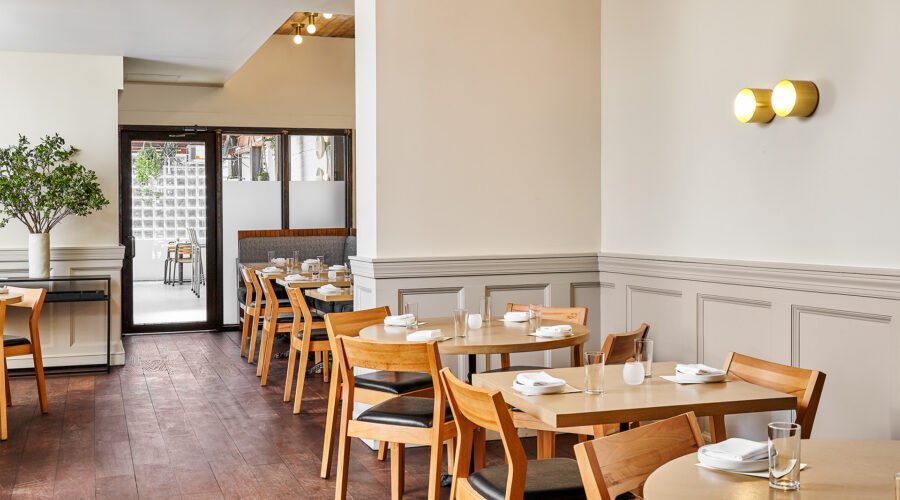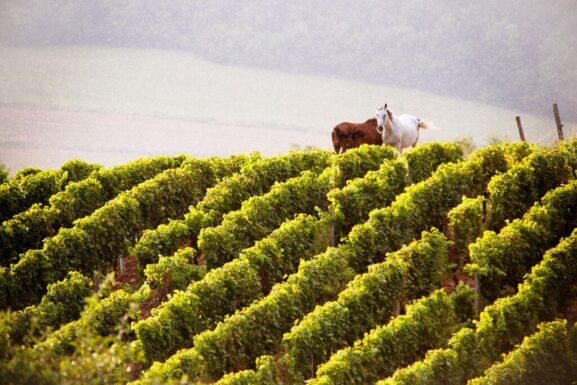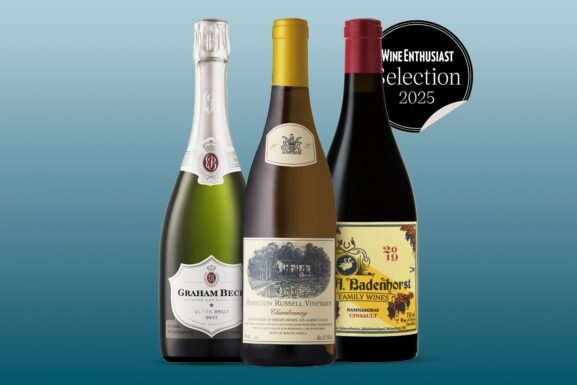‘A Beverage Revolution’: How Restaurants Craft Nonalcoholic Drink Menus
It’s no secret that nonalcoholic beverages have stirred up the passion of consumers. According to Nielsen, sales in 2021 increased 33% from the previous year, to $331 million.
With such demonstrable growth, restaurants have made room behind the bar. Chef-driven, nonalcoholic menus have popped up throughout the country.
Sean Brock, chef and owner at Audrey in Nashville, collaborated with Acid League in 2022 to create a wine proxy. Proxies are nonalcoholic mixes of vinegar, tea and fruits, herbs, spices and more that mimic the taste of wine.
Brock was inspired by his grandmother’s wine crafted from wild elderberries picked on her property. He added Appalachian ingredients like pawpaws and pine to complement his cuisine. More Acid League wine proxies, like Brock’s proxy Audrey, have found a home on the menu.
“I truly feel like we are at the very beginning of a beverage revolution,” says Brock, who doesn’t drink. “Making zero-proof beverages forces you to think like a chef and opens up a whole new world of undiscovered pairings.”
At Willa’s in Tampa, zero-proofers have been part of the dining experience since its debut in March 2021. They occupy half of the cocktail menu. Mercedes Mestizo, the assistant general manager, says that she and her sober friends wanted to enjoy the same experience of diners who drink alcohol. Inclusivity became a priority with the bar program.
“If you’re sober, or you’re pregnant, or looking for a healthier option, everybody should feel included,” says Amber Carregal, Willa’s lead bartender.

Julia Momosé, a James Beard Award winner and owner of Kumiko in Chicago, grew up in a home without alcohol. As a bartender, she wanted her parents to have inventive drink options when they would visit her.
“Lots of people are looking for incredible experiences, but the alcohol isn’t necessarily what makes it great,” she says.
In 2017, Momosé wrote a self-described manifesto, Spiritfree, that championed nonalcoholic concoctions as diverse and thoughtful, rather than something less than a traditional cocktail. This ethos drives the beverage menu at Kumiko.
“My idea was to create a storyline,” she says. “What’s someone going to want in the beginning of the evening, what will they want midway through their experience [and] what finishes the action? From there, I filled in the gaps with various textures and flavors, highlighting the ingredients.”

Storytelling shapes how Adam Fournier, bar director at Fellow in Los Angeles, approaches its nonalcoholic program.
“A drink is part of a story and conversation between a business and their guests,” says Fournier. “We want to make sure that no matter what anyone drinks, they get as mindful and creative an experience as every other guest.”
At Oxalis in New York City, the nonalcoholic program grew out of necessity. Its liquor license was delayed. “Our concept was based on natural wine pairings with the food, so it forced our hand in developing nonalcoholic pairings,” says Piper Kristensen, the beverage director.
Kristensen and crew let their creative juices flow. “When we talk about wine, you’re not saying ‘wine flavored,’” he says. “You can use the words you would use with wine to build a nonalcoholic [drink], teasing out the elements that stand out and make it work with the food.”
It may sound simple, but the research and development going on at Oxalis is anything but elementary. A catalog was created to chronicle acid powders, which can impart a wine’s structure and complexity to a nonalcoholic beverage.

But it’s more than mere chemistry. Inspiration is also derived from weekly trips to the market with the chefs, work with a forager in darker months as well as the micro-seasons that form the backbone of the Oxalis menu.
“The whole thing about going to a restaurant is you’re going to have an experience you can’t get anywhere else,” says Kristensen “We want to curate that to make sure you’re completely immersed, from the food to the beverage program.”
In Nashville, Jon Howard, the bar director at Audrey, also puts seasonal produce at the center of their story. “There’s not an alcoholic menu and a nonalcoholic menu,” he says. “There’s one menu [with] five spirited drinks and five zero-proof drinks. We want people to have the same experience, whether they decide to drink alcohol or not.”
Eliminating alcohol as a necessity in a cocktail is at the heart of these sophisticated menus, says Fournier. It allows bar programs to play with textures and presentations suitable for the experience they seek to achieve.
Kristensen agrees. “The cocktail is a delivery mechanism for alcohol. Your delivery guy can throw your package over your gate, and it still gets there. But [nonalcoholic drinks] deliver nothing but an experience.”
Fournier sees the growth of nonalcoholic drinks as a natural outgrowth of the craft cocktail movement. “We’ve been spending the past couple of decades educating people about food, what’s the provenance [and] how it’s been prepared,” he says. “We’re doing the same thing with spirits and cocktails, re-examining the relationship with beverages and what a beverage occasion looks like.”


